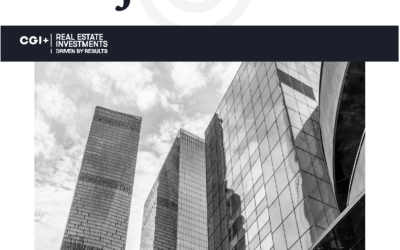Even with the recent worldwide market volatility, distressed investors say the slow-to-recover secondary and tertiary markets provide ample opportunity to get more value for your dollar
Investors spent much of 2011 crowd- ing into top-tier cities in search of the perfect distressed opportunity. And although prime assets continue to draw significant interest, many investors are turning to the often-overlooked secondary and tertiary locations, despite turbulence in the global financial markets and worries surrounding the eurozone debt crisis. Those lower-tier markets, experts say, can offer surprising opportunities in both pricing and asset quality.
Moving toward the mid-part of 2011, investors began to shift their focus from the core, well-located primary assets—where cap rates had dropped to the low 5s and 4s in the best markets— to more secondary markets or assets with more fundamental risk, explains New York City-based Jay Koster, Jones Lang LaSalle’s Americas capital markets president. “However, given the recent worldwide market volatility, investors’ overall desire for risk has become muted and they remain very price- sensitive for any additional market or fundamental risk they are undertaking outside of those prime markets.”
While Cohen & Associates, for ex- ample, invests in core markets throughout the West, president Gidi Cohen tells DAI that the firm is not shying away from secondary and tertiary opportunities. In fact, the Los Angeles-based company is looking at secondary and tertiary markets in California, Florida, Georgia, Colorado, Nevada and Arizona. “We look for deals that are near large corporate headquarters or business districts, because where people work is also where people live,” says Cohen.
Cohen points out that the more appealing markets are those that are more distressed or “have seen more pain” and thus experienced greater price decreases from the peaks of the mid-2000 cycle. A great example, is the Orlando area, hit hard by the crash, not only because of new construction pullouts, but also because many existing homes and units were managed as vacation rentals.
“When vacationers stopped visiting, the incoming revenue decreased and the foreclosure rate skyrocketed,” says Cohen. “It went up so much that some parts of Florida actually began conducting auctions online, rather than in an actual courthouse. As the Florida markets stabilize, the property values naturally increase.” In addition, he says, as other parts of the country recover and as wages and employment increase, “people will be eager to go on vacation and take their kids to places like Disney World in Orlando.”
In areas where values remain depressed compared to core cities, such as Las Vegas and Kissimmee, FL, larger upside growth is anticipated when the markets rebound. “Many of these markets have been slow to recover and as a result we’re still able to buy at a lower cost basis,” Cohen says. “Also, when considering those assets that we buy vat price per unit and price per square foot as a commodity, we get much more value for our dollar.”
In the western US, for example — a focus for Newport Beach, CA-based Voit Real Estate Services — the more appealing secondary and tertiary markets for distress include Sacramento, San Diego, Phoenix and Las Vegas. Portland, to the northwest, is also attractive, as is Bellevue, WA, east of Seattle, according to Cary Calkin, the firm’s director of asset services. “What makes these markets appealing is the strength of the cities nearby or the fact that the distressed properties have been priced so low as to have the risk taken out of the purchase,” he says.
It isn’t just about where you look, but also about what product type you look at. For example, Cohen points out that he would look for undeveloped land in California, while in Colorado, Florida, Las Vegas and Arizona, he would look more at multifamily. He adds that “multifamily near universities is good, because students will always rent versus buy.” That comment was echoed by panelists during a recent GlobeSt.com webinar on the subject, where speaker James Halliwel, managing director of Principal Real Estate Investors in Des Moines, said he’s seen some great success in multi-family in places like Pittsburgh.
At the recent Urban Land Institute Fall Meeting in Los Angeles, Taylor Grant, founding principal of Real Estate Receiverships, moderated a panel that discussed the issue of possible over- heated core markets and the need to look carefully at second-tier cities. The consensus, he says, was that depending on the capital source’s criteria, class-A properties in lower-echelon cities may be a better bet. That’s because the cash flow—due to higher cap rates going in — may more than offset the perceived safety of buying only in core markets. Like Cohen, Grant, who’s firm is also based in Newport Beach, says the sector getting the most play is apartments, but he also sees strong interest in supermar- ket-anchored retail centers.
Rich Walter, president of Faris Lee Investments in Irvine, CA, agrees, telling DAI that shadow-anchored drug and food properties offer good opportunities to buy distress in secondary and tertiary markets. “Many tertiary locations were planned areas where there was growth of housing,” he says. “Then housing shut down and the retail properties were built ahead of the growth.” As the residential market recovers, “these properties can be exceptional buys for a patient investor.”
Walter points out that Las Vegas retail is doing well in anchored centers, “but they likely trade at higher cap rates than major markets.” He adds that regardless of the market, the key factor is buying well-located real estate.
According to Grant, the groups starting to look in those markets are larger funds with “experienced real estate operational people who can filter through the available proper- ties and find one with a unique set of facts” that may represent “a great defensive buy. Many well-funded private sources are already finding the $5-million to $15-million properties in second-tier cities.”
Secondary markets are also reigniting interest among European and Asian investors, according to JLL. Steve Collins, Americas managing director of the firm’s international capital group in Washington, DC, says that foreign investors are “moving slightly further out on the risk continuum into solid, well-located properties in secondary markets.” Even if they stay in core cities, he adds, they’re broadening their search to include value-add or even distressed assets within those markets.
During the GlobeSt.com webinar, Warren Dahlstrom, Washington, DC-based president of Colliers International Investment Services Group, pointed to an annual global survey showing that US investors are more ready to move up the risk scale than those in other parts of the world. “They are more likely to take on riskier projects or properties, and that certainly means secondary markets because of volatility and size,” he said. “Secondary markets do require more risk, but the good news is that you can get higher yields there.”
Grant says that “if you buy at a 4.5% cap rate, it’s difficult to project any cap-rate compression over your hold period. If you buy at a 7% or 8% cap, you can project even a 1% compression with minimum rent increases and obtain a reasonable return.” Overall, he adds, “there is possibly just too much ‘homeless capital’ looking, and some buyers may have already overpaid.”
The best deals, according to Voit’s Calkin, will be for owner-users who are financially stable and have sought a building for a long time but have been priced out of the market. “Those buyers make up a significant segment of the market,” he says. “Investors with good relationships with specific tenants or users comprise another big segment. If you have a tenant in tow, you can make a safe investment decision on a distressed asset.”
Source: Distressed Asset Investor

